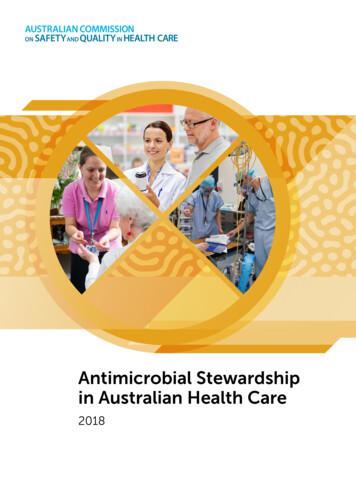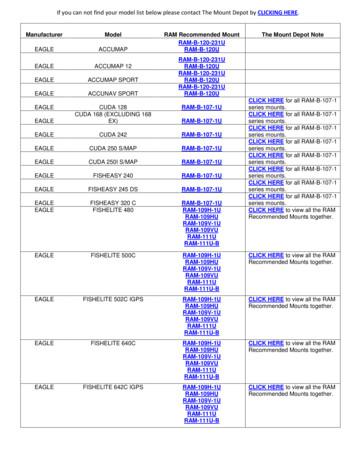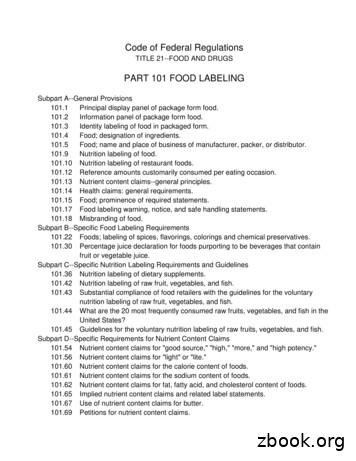Product Stewardship 101 - Cdn.ymaws
Product Stewardship 101 Basics and Beyond Scott Cassel, Executive Director – Product Stewardship Institute Carl Smith, President and CEO – Call2Recycle Theresa Stiner – Iowa Department of Natural Resources October 12, 2011
PSI’s 12th Webinar Series Part One: Product Stewardship 101 “Fluorescent Lamp Recycling Legislation: Where Are We Now?” on Wednesday, October 19, 1:00-2:00 PM ET / 10:00 AM-11:00 AM PT “Mercury Thermostat Collection Programs: How Much Mercury Are We Capturing?” on Wednesday, October 26, 1:00 - 2:00 PM ET/10:00 - 11:00 AM PT October 13, 2011 2
PSI’s 12th Webinar Series Parts 2, 3, and 4 of PSI’s 12th Webinar Series will be held on the following topics from November 2011 – January 2012: Electronics Beverage Containers Carpet Canadian Packaging Systems Phone Books Framework Legislation Mattresses Incentives and Changing Consumer Behavior Packaging October 13, 2011 How to Sell" Product Stewardship 3
Who is the Product Stewardship Institute? Non-profit founded in 2000 Memberships 47 States 200 Local governments Partnerships (75 ) Companies Organizations Universities Non-US Governments Board of Directors: 7 states, 4 local agencies Multi-stakeholder product stewardship network October 13, 2011 4
How to Participate Today You can connect to the Audio portion using VoIP or your telephone. To ask a question (verbally) via phone or VOIP please use the hand-raising function. To type in a question, use the Question tab. October 13, 2011 Technical Difficulties? Dial 800.263.6317 5
Overview of Today’s Webinar What is product stewardship and why is it important? Input by our 2 expert panelists – Carl Smith (President and CEO, Call2Recycle) – Theresa Stiner (IA Department of Natural Resources & PSI Board Member) Active question & answer session with participants October 13, 2011 6
What’s the Problem? Most products are not sustainable o Designed for disposal o Contain toxics o Difficult to recycle Wasted! o Resources o Jobs o October 13, 2011 Product Stewardship Institute – November 3, 2010 7
What’s the Problem? Consumers do not pay full product cost Products do not compete on level playing field Problem is pushed “downstream” to government October 13, 2011 Product Stewardship Institute – November 10, 2010 8
The Problem: Another Angle Lack of infrastructure to manage products Lack of awareness about problem/solutions Lack of incentives to change behavior October 13, 2011 Product Stewardship Institute – November 3, 2010 9
What is Product Stewardship? Product stewardship is a policy that ensures that all those involved in the lifecycle of a product share responsibility for reducing its health and environmental impacts, with producers bearing primary financial and management responsibility. October 13, 2011 10
What is Extended Producer Responsibility (EPR)? A policy approach in which the producer’s responsibility extends to the post-consumer management of that product and its packaging. EPR is a central tenet of product stewardship. October 13, 2011 11
Product Stewardship and EPR Product stewardship is about lifecycle and sustainability EPR is about extending a producer’s responsibility to managing its product at end-of-life October 13, 2011 Product Stewardship Institute – November 10, 2010 12
PSI Principles of Product Stewardship 1. 2. 3. 4. 5. Cost internalization Shared responsibility Lifecycle costs Performance goals Flexibility for producers Basic building blocks of product stewardship programs Developed by PSI in 2001 Endorsements: National League of Cities, Environmental Council of States, Solid Waste Association of North America, and many other organizations October 13, 2011 13
EPR – Changing the roles for the public and private sectors Traditional Regulation: Government Dictated EPR: Not Prescriptive Sets parameters, but allows flexibility to determine the most cost-effective solutions within those parameters Flexibility promotes a market-based solution to meet goals Traditional Regulation: Government Run EPR: Industry Run Government oversees law but producers responsible for implementation October 13, 2011 14
EPR – Changing how recycling is financed Traditional Regulation: Costs borne by taxpayers EPR: Management costs are shifted to the marketplace Recycling collection and infrastructure incorporated in the product price or a company’s cost of doing business Producers responsible for their products at the end of life Producers internalize costs of reducing environmental externalities October 13, 2011 15
It’s happening NOW EPR laws in effect since 2000 Number of Laws 70 60 50 40 30 20 10 0 2000 2001 2002 2003 2004 2005 2006 2007 2008 2009 2010 2011 Year October 13, 2011 16
U.S. State EPR laws – 2011 October 13, 2011 17
Another View on State EPR Laws 70 EPR laws in 32 states (including laws on carpet, cell phones, and agricultural pesticide containers) 3 3 8 9 14 24 1 “Framework” Law (ME) October 13, 2011 18
2011 EPR state legislation EPR Laws Passed Vermont 3rd in nation Connecticut 3rd in nation Utah 24th in nation Texas Added TV’s October 13, 2011 19
EPR laws and legislation in the U.S. U.S. Products with EPR Laws U.S EPR Legislation (2010 & 2011) Auto switches Agricultural pesticide containers Beverage containers (some) Batteries (mercury and rechargeable) Carpet Electronics Fluorescent lamps Framework Paint Thermostats October 13, 2011 Batteries Carpet Electronics Fluorescent lamps Framework Paint Plastic bags Mattresses Medical sharps Packaging/printed materials Pharmaceuticals Smoke detectors 20
Related local and federal actions Local Ordinances Federal Legislation Electronics: New York City ordinance preempted by state law (2010) Pharmaceuticals: San Francisco ordinance introduced (2010) Phone books: Seattle opt-out ordinance (2010) and San Francisco opt-in ordinance (2011) Retail Collection: San Luis Obispo County (CA) & Dane County (WI) require retailers to collect specific products Pharmaceuticals - Controlled Substances Act amended to facilitate drug takeback (2010) - Pharmaceutical Stewardship Act (HR 2939) – 2011 EPR bill Electronics: Responsible Electronics Recycling Act (HR 2284 and S1270) – export ban October 3, 2011 21
Benefits of product stewardship Greater environmental protection Fiscal relief More jobs More Sustainable Products Product stewardship is an investment October 13, 2011 22
Voluntary Industry Take-back Programs Manufacturers Electronics manufacturers Call2Recycle (rechargeable batteries) Thermostat Recycling Corporation End of Life Vehicle Solutions Corporation (ELVS) Pesticide containers Retailers Staples, Office Max, Office Depot – Computers, batteries, cell phones, toner cartridges Best Buy – Electronics, etc. Home Depot and Lowe’s – CFLs, etc. October 2011 Product13, Stewardship Institute – February 25, 2011 23 23
Role of Voluntary Systems Works for products that have value at end of life (e.g., toner cartridges, auto batteries) Interim steps prior to legislation Address sustainability issues Allows for industry sector leaders to emerge October 13, 2011 24
Regulated Systems Addresses market failure – when products have negative value at end of life Achieves greater program performance Levels the playing field (fair) Gives authority to agency to enforce against those non-compliant and to enhance program Expresses clear will of government so market forces have certainty, leading to investment October 13, 2011 Product Stewardship Institute – November 3, 2010 25
Generic EPR Example All key stakeholders have a role Stewardship Organization(s) Manufacturer Implements program either individually or collectively. Each company’s contribution is determined based on market share, return share, or other factors. Retailer Government Oversight Consumer October 13, 2011 Could Include government collection sites IndustryBrand owner run manages programto program meet performance targets 26
Why do businesses engage in EPR policy dialogues? Reduce Business Risks – Threat of legislation, creating uncertain business conditions – History and experience (e.g., paint industry) – Getting left behind peers Opportunities – Gain competitive advantage – Create/maintain image of sustainability – Corporate ownership control October 13, 2011 27
U.S. Industry’s Level of Engagement in Product Dialogues High Thermostats Lamps Single Use Batteries Low Mattresses Electronics Phone Books Paint Rechargeable Batteries Tires Gas cylinders Packaging, Carpet Medical sharps Pharmaceuticals October 13,21, 2011 September 2011 28
Range of Industry Responses aka “Industry Stages of Grief” 1. “There is no problem” 2. “Government should do more to address the problem” 3. “More funding is not needed” 4. “Government programs should be paid through a visible consumer fee” 5. “Industry programs are more efficient so private sector should manage and fund” 6. “Don’t hold us responsible for meeting performance goals” 7. “Acceptance of producer responsibility in context of shared responsibility” October 13, 2011 29
Range of Industry Responses “Acknowledgements” 1. My product causes social and environmental problems. 2. Optimizing the current system is a partial (albeit critical) solution. 3. Investments yield dividends. 4. ARFs are less efficient than industry managed programs. 5. EPR can work for my company’s business model. 6. All companies have goals, and by achieving them I can keep government off my back. 7. I want my program to be the most efficient and cost effective October 13, 2011 30
Key Common EPR Challenges 1. Show how benefits outweigh costs of EPR. 2. How do we define and measure product stewardship success? 2. What polices will result in greatest product design changes? 3. How can we achieve change quicker, cheaper, and still be sustainable (over time)? 4. What policies will most reduce product lifecycle impacts (vs. solely end-of-life)? 5. How do we integrate chemicals policy into product stewardship programs? October 13, 2011 Product Stewardship Institute – November 10, 2010 31
Example: Paint PROBLEM: Excessive Waste 10% of paint sales becomes leftover (75 million gallons) 640 million dollars/yr mgt cost (avg. cost: 8/liquid gallon) All stakeholders included 2 MOUs documented agreements PSI facilitation/mediation October 13, 2011 32
National Paint Stewardship Dialogue Consensus producer-financed legislation o Oregon demonstration state (model) – 2009 o California 2nd law – 2010 o Connecticut 3rd law – 2011 Roll out to other “MOU states”: VT, FL, IA, NC, WA, MN Roll out nationally “PSI is the glue that holds the initiative together” October 13, 2011 33
Paint Program Benefits Financial & Environmental Savings – Oregon: Save government about 6 million annually in direct savings or service benefit. – Will properly manage up to 800,000 gallons of leftover paint each year Investment in recycled paint manufacturing – Amazon Environmental – Metro (regional government), OR October 13, 2011 34
Who makes product stewardship happen? Businesses Local/state governments Federal government Environmental/health organizations Universities and colleges Other institutions October 13, 2011 35
Manufacturer and Government Perspectives on Product Stewardship Can you describe your respective roles in an EPR system, as well as in the broader product stewardship movement. What are the main barriers that need to be overcome for EPR systems to succeed? What do you see as the role of voluntary systems as compared to EPR legislation? What do we need to do to reduce the impact across the total product lifecycle – what is the role of government and what is the role of partnerships and other actions? October 13, 2011 36
For the Audience: How to ask Questions There are two ways in which you can ask a question during today’s session. If you would like to communicate verbally, please use the “hand-raising function” on your control panel. You MUST either have a microphone on your computer, or be dialed-in through a telephone to speak verbally You can also use the Question box to send in a question or comment at any time during the webinar. In that case, please tell us who you are addressing in your question. October 13, 2011 37
Upcoming PSI Webinars Fluorescent Lamp Recycling Legislation: Where are we now? – Wednesday, October 19, 1-2 pm ET Mercury Thermostat Collection Programs: How Much Mercury are we Capturing? – Wednesday, October 26, 1-2 pm ET Additional Webinars will be held from November 2011– January 2012 on the topics of electronics, carpeting, mattresses, phone books, packaging, framework legislation, incentives and changing consumer behavior, and “selling” Product Stewardship For more information and to register, please see the Product Stewardship website at: www.productstewardship.us/networkingcalls October 13, 2011 38
Contact Scott Cassel Product Stewardship Institute Executive Director / Founder 617-236-4822 scott@productstewardship.us October 13, 2011 Carl Smith CEO/President Call2Recycle (678) 218-4586 csmith@call2recycle.org Theresa Stiner Senior Environmental Specialist IA Department of Natural Resources (515) 281-8646 Theresa.Stiner@dnr.iowa.gov 39
Product Stewardship Institute? Non-profit founded in 2000 Memberships 47 States 200 Local governments Partnerships (75 ) Companies Organizations Universities Non-US Governments Board of Directors: 7 states, 4 local agencies Multi-stakeholder product stewardship network October 13, 2011 4
Verkehrszeichen in Deutschland 05 101 Gefahrstelle 101-10* Flugbetrieb 101-11* Fußgängerüberweg 101-12* Viehtrieb, Tiere 101-15* Steinschlag 101-51* Schnee- oder Eisglätte 101-52* Splitt, Schotter 101-53* Ufer 101-54* Unzureichendes Lichtraumprofil 101-55* Bewegliche Brücke 102 Kreuzung oder Einmündung mit Vorfahrt von rechts 103 Kurve (rechts) 105 Doppelkurve (zunächst rechts)
Chapter 5: Antimicrobial stewardship education for clinicians 123 Acronyms and abbreviations 126 5.1 Introduction 127 5.2 Key elements of antimicrobial stewardship education 128 5.2.1 Audiences 128 5.2.2 Principles of education on antimicrobial stewardship 129 5.2.3 Antimicrobial stewardship competencies and standards 129
FISHFINDER 340C : RAM-101-G2U RAM-B-101-G2U . RAM-101-G2U most popular. Manufacturer Model RAM Recommended Mount The Mount Depot Note . GARMIN FISHFINDER 400C . RAM-101-G2U RAM-B-101-G2U . RAM-101-G2U most popular. GARMIN FISHFINDER 80 . RAM-101-G2U RAM-B-101-G2U . RAM-101-
UOB Plaza 1 Victoria Theatre and Victoria Concert Hall Jewel @ Buangkok . Floral Spring @ Yishun Golden Carnation Hedges Park One Balmoral 100 100 100 100 100 100 100 100 100 100 100 100 100 100 100 101 101 101 101 101 101 101 101 101. BCA GREEN MARK AWARD FOR BUILDINGS Punggol Parcvista . Mr Russell Cole aruP singaPorE PtE ltd Mr Tay Leng .
Product Stewardship: the first step to a circular economy Product stewardship is simply the responsible management of the environmental impact of a product, at all stages of the product lifecycle. Everyone plays a part in a product's lifecycle, from design to use, reuse, recycling or disposal. We all need to work together to come up with
101.5, 101.8, 101.9, 101.13, 101.17, 101.36, subpart D of part 101, and part 105 of this chapter shall appear either on the principal display panel or on the information panel, u
and the Core Elements of Antibiotic Stewardship for Nursing Homes (23). This 2016 report, Core Elements of Outpatient Antibiotic Stewardship, provides guidance for antibiotic stewardship in outpatient settings and is applicable to any entity interested in improving outpatient antibiotic prescribing and use.
ASTM D-2310 Classifi cation: RTRP-11AX for static hydrostatic design basis; IPD cured. Complies with ASTM F-1173 Classifi cation. Approvals Quick-Lock Uses and applications Characteristics Taper/Taper 18-40 inch 1-16 inch A complete library of Bondstrand pipe and fi ttings in PDS and PDMS-format is available on CD-ROM. Please contact Ameron for details. For specifi c fi re protection .























